Gardening: An Eco-Friendly Lawn by Gus Stewart
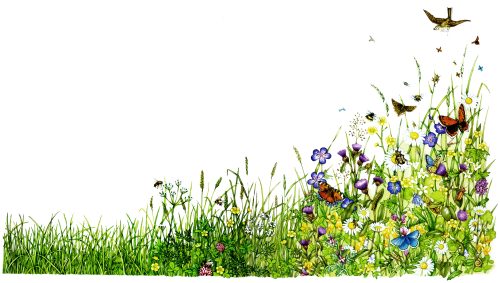
This blog is guest-written by Gus Stewart, who generously wrote another blog on the importance of bees recently. In light of the hot, dry weather we had here in the UK at the start of the summer, here are his tips for the garden for the next time the weather burns hot. All illustrations by me, Lizzie.
Maintaining an Eco-Friendly Lawn
Water shortages happen frequently in some parts of our country and they can damage the beautiful lawn you’ve maintained. In fact, you may have given up on the idea of a nice lawn because you want to conserve water.
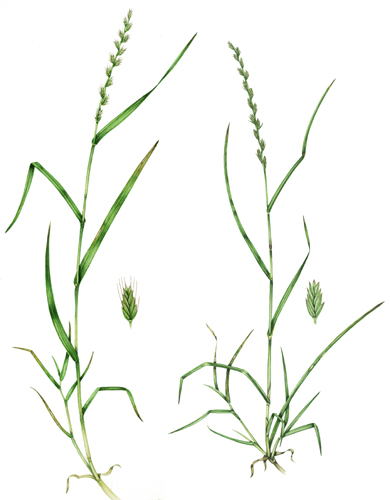
Perennial Rye grass, Lolium perenne. This grass is tough and drought resistant.
Well, with careful planning and smart choices, you may be able to maintain a lush lawn and save water at the same time. Here are the keys steps you need to take to do just that.
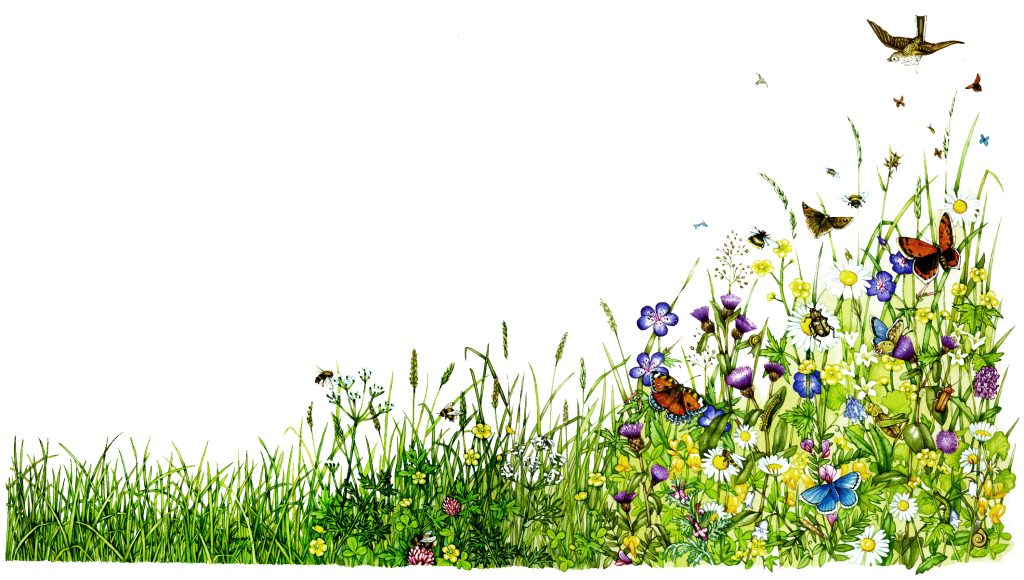
Illustration of a healthy meadow through to a species-poor lawn
Planning for Long-Term Sustainability
First, you may need to redesign your lawn and yard areas to make this happen. Making your yard more sustainable includes:
● Finding ways to conserve water during maintenance.
● Using plants that need less water.
● Possibly reducing how much of your yard is covered in grass.
● Water-efficient landscape design or redesign.
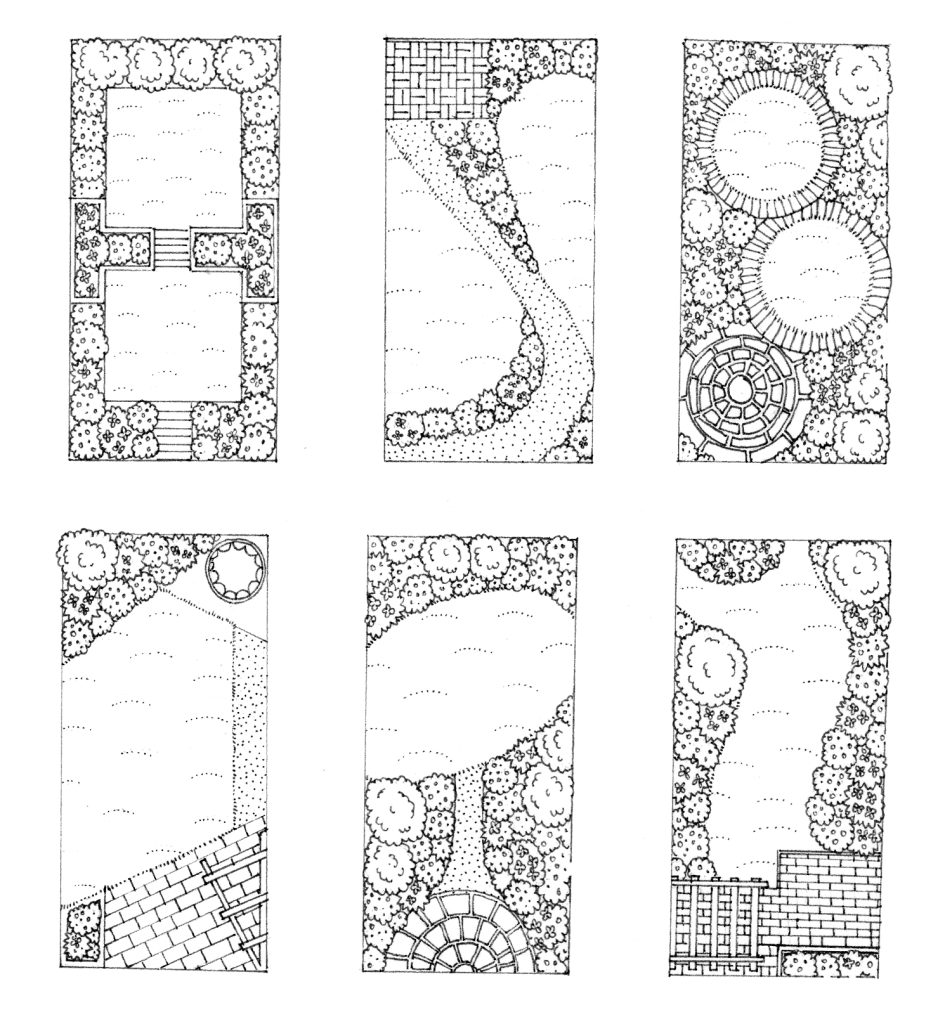
Different garden layouts, arial view
Water-Conscious Landscaping Tips
Now, let’s look at that landscaping. Here are some ways you can improve it:
● You can still have beautiful landscaping after reducing your lawn. Earth 911 recommends using gravel and planting trees. Put mulch around the base of the trees for a decorative touch.
● Another idea is to create a rock garden in place of grass. If you’re struggling to visualize how this can look beautiful, check out those seven inspired landscapes with no lawn from Sunset.com.
● Plant a rain garden. This is a great choice, because a rain garden can filter runoff after a storm. Make sure you choose plants that tolerate wet locations and native plants.
● Choose trees and plants that are less “thirsty.” Check out this list of five (USA) plants that you almost never have to water from House Logic.
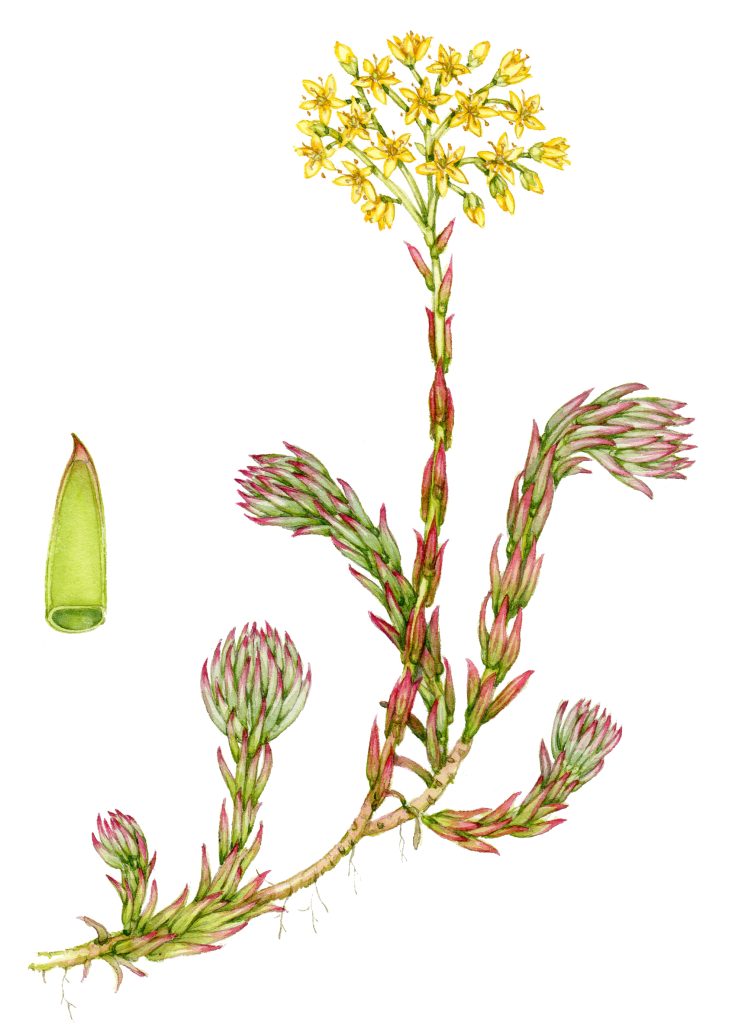
Sedum is one of many drought-resistant plants you can use
If you’re feeling that revamping your lawn to be more water-conscious is overwhelming, consider hiring a professional landscaper. The average cost for a landscaping installation is between £1,361.50 and £2,488.75.
For more tips on conserving water in your garden, check out this blog from The Daily Gardener.
The Right Gardening Tools
If, however, you’re ready to “dig” right in, make sure that you have the best gardening tools to get everything done such as a good quality lawnmower. A mower should be the right height, able to handle the size of your lawn, and able to handle your terrain: flat, uneven or somewhere in between.
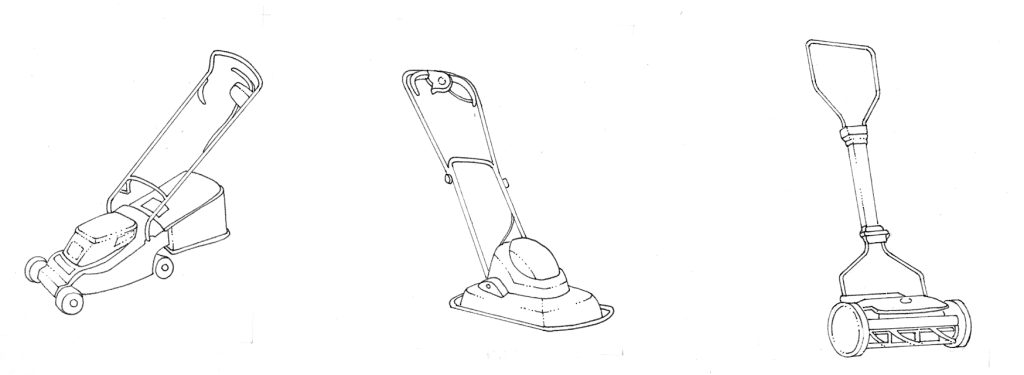
Different types of mower to consider
If you’re collecting rainwater, you need barrels that are free from rust and other corrosives. Most are made of recycled metal, although for a steep price, you can buy a wooden one. Put them under your downspout. If you plan on using this water for any in-home uses such as drinking or bathing, you’ll need to have a quality water filter system as well.
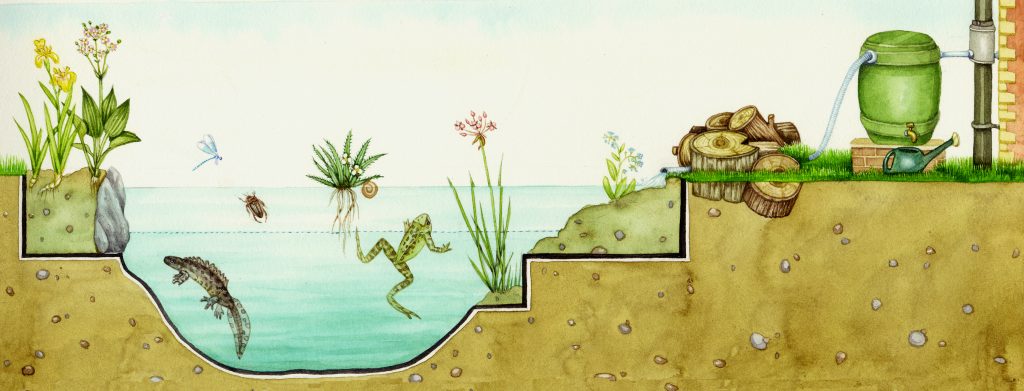
A water butt can be used to collect rainwater from the roof
Finally, you can’t do any of this work without a good pair of gardening gloves to keep your hands free of injury and roughness. Check out this list of the nine best gardening gloves you can buy.
How To Conserve Water During Lawn Maintenance
How can you water your lawn while still conserving water? These tips will help:
● Consider installing a drip irrigation system, which allows nutrients to slowly drip into the root system.
● GoodNet.org recommends you mow your lawn at longer heights, which will help it to stay moist for a longer period of time. This allows the roots to grow deeper. They also suggest changing up your mowing patterns to avoid creating divots where water can collect.
● You can recycle water by using “grey” water. This is gently used water from your home, such as the shower or dishwasher. If you choose this option, you must use environmentally safe soaps and detergents in your home. If this does not appeal to you, you can also collect rain in a rain barrel.
● Toro Yardcare claims that mowing at the right time – like 4 or 5 a.m. – is better helps the roots absorb water.
● According to Rainbird.com, you’d be wise to install an automatic irrigation system so that plants that need less water, get less water. You can also program it to only water what grows.
With the right choices and changes, you can have a beautiful and water-conscious garden. Take steps toward saving water today.
A thriving garden can attract wildlife; get the watering right and you’ll be helping wildlife as well as plants.

